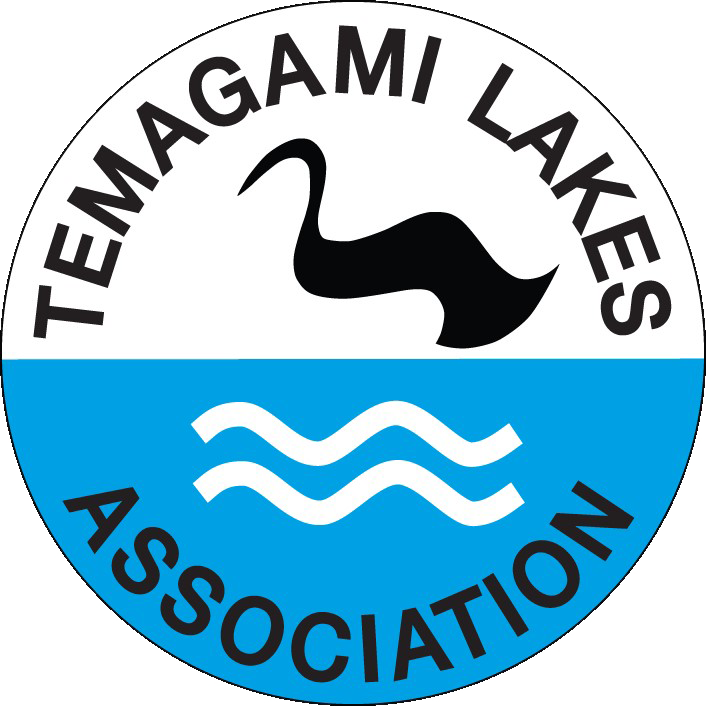July 12, 2023 Fire at Langskib
by Brit Hyde, Island 1248 and 1245
Just before 7:00 p.m. on July 12, a large plume of dark black smoke was visible from Whitefish Bay. Unsure of the source, my nephew Greg, his fianceé Madison, and I jumped in a skiff and raced towards Sharp Rock, through the upper narrows, and toward the column of smoke.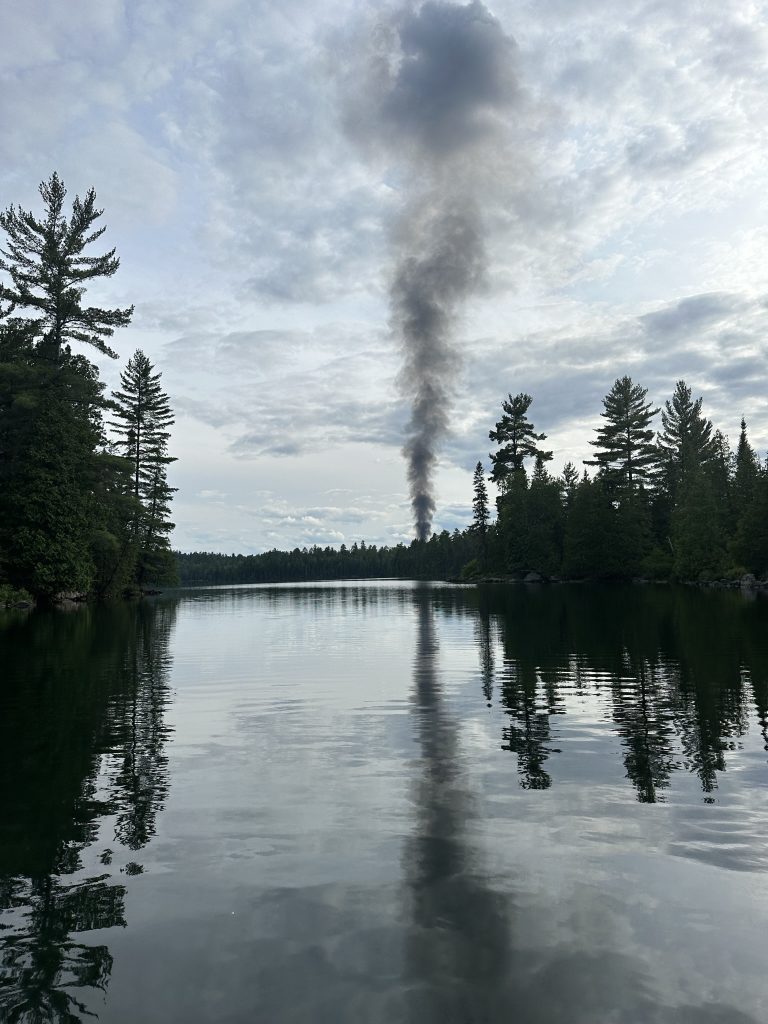
Heading south into Sharp Rock, it didn’t take long to realize the source of the fire was Langskib Island # 1222.
Video 1: https://youtube.com/shorts/U4xfKp-wnNs?feature=share
Approaching the island at 7:17 p.m., we could see that the main lodge was ablaze, and spotted the bank of propane tanks on the dock just below the lodge.
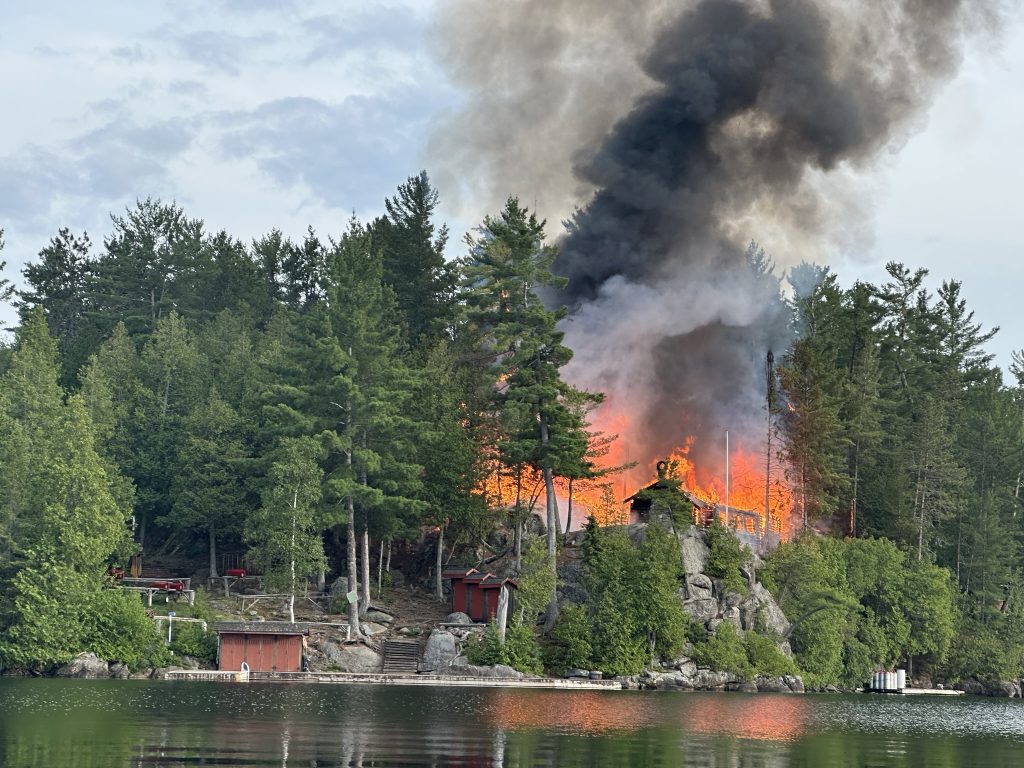 Some nearby Sharp Rock islanders had arrived just before us. We paused to take a video from the water, and spoke to them in their boat just off shore to learn what they knew and to make a quick visual assessment.
Some nearby Sharp Rock islanders had arrived just before us. We paused to take a video from the water, and spoke to them in their boat just off shore to learn what they knew and to make a quick visual assessment.
Video 2: https://youtube.com/shorts/pyUhG2EhQQc?feature=share
Video 3: https://youtu.be/tNvj0ZnCQdQ
We headed to the dock, the 2nd boat to land, and found Ian Carswell moving canoes and paddles away from the blaze. Ian had established, and shared with us, that there was no one on the island.
Together a few of us went through the Langskib boathouse building looking for buckets. A bucket brigade wasn’t going to stop the fire, but we could at least douse hot spots from embers, in an effort to contain the blaze and to keep the fire from spreading across the island. The prevailing wind was light, and it was likely to push the fire towards the lake, as opposed to inland. A fire creates it’s own wind, however, and in short order the fire was spreading to other buildings.
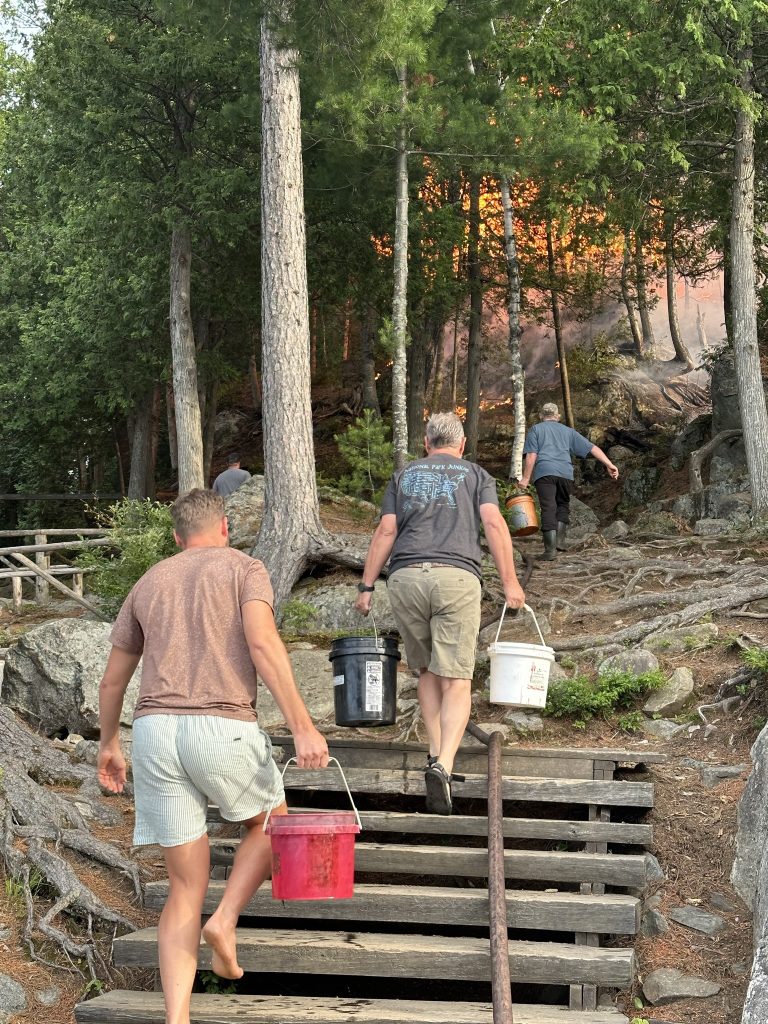 Keewaydin staff and other islanders started arriving promptly after seeing the same blaze, and by 7:30 p.m., the first portable fire pump (eventually there would be just under a dozen) started pumping water.
Keewaydin staff and other islanders started arriving promptly after seeing the same blaze, and by 7:30 p.m., the first portable fire pump (eventually there would be just under a dozen) started pumping water.
Hudson McCubbin has previous firefighting experience and knew enough to douse himself with water, and regularly douse his shoes, before getting too close to the fire.
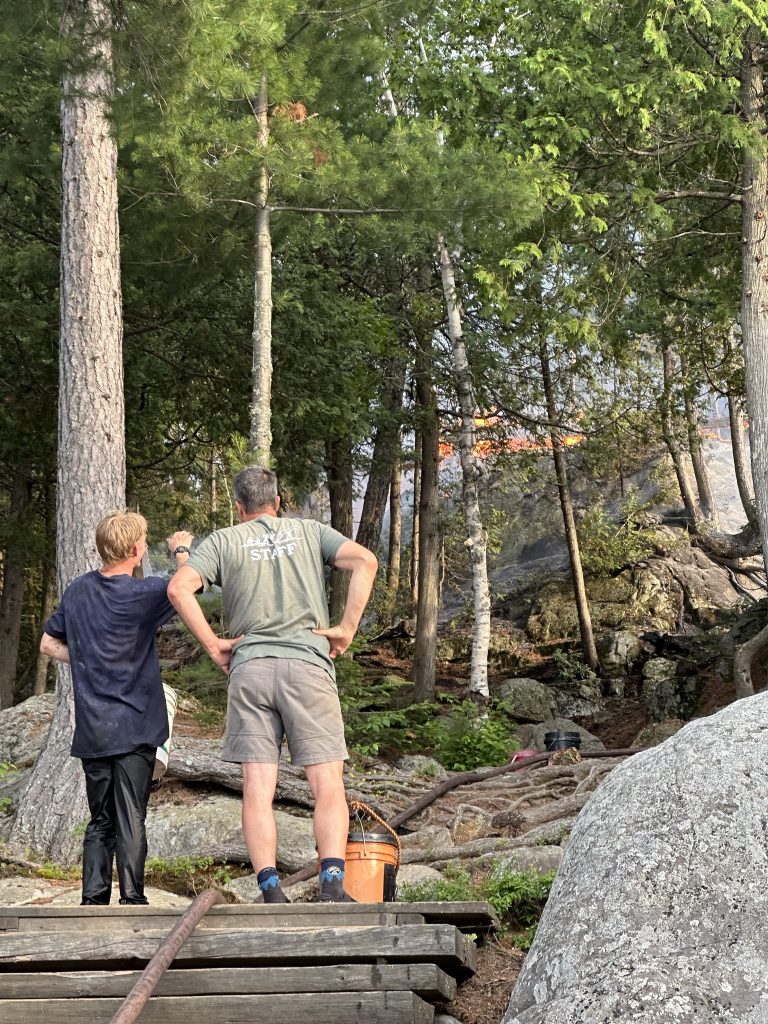 Hudson and Ian led the fight against the main fires – directing hoses and personnel, working to organize more hose extensions, and figuring out nozzles, all while operating hoses almost non-stop from the time the pumps arrived. Keeping cool heads throughout, Hudson and Ian are the kind of people you want leading a team.
Hudson and Ian led the fight against the main fires – directing hoses and personnel, working to organize more hose extensions, and figuring out nozzles, all while operating hoses almost non-stop from the time the pumps arrived. Keeping cool heads throughout, Hudson and Ian are the kind of people you want leading a team.
Video 4: https://youtube.com/shorts/colZzJbxky0?feature=share
By 8:00 p.m., more pumps and hoses were arriving – but it was clear that the building at the top of the hill was now in full blaze, as previous efforts to prevent the fire from spreading uphill were unsuccessful.
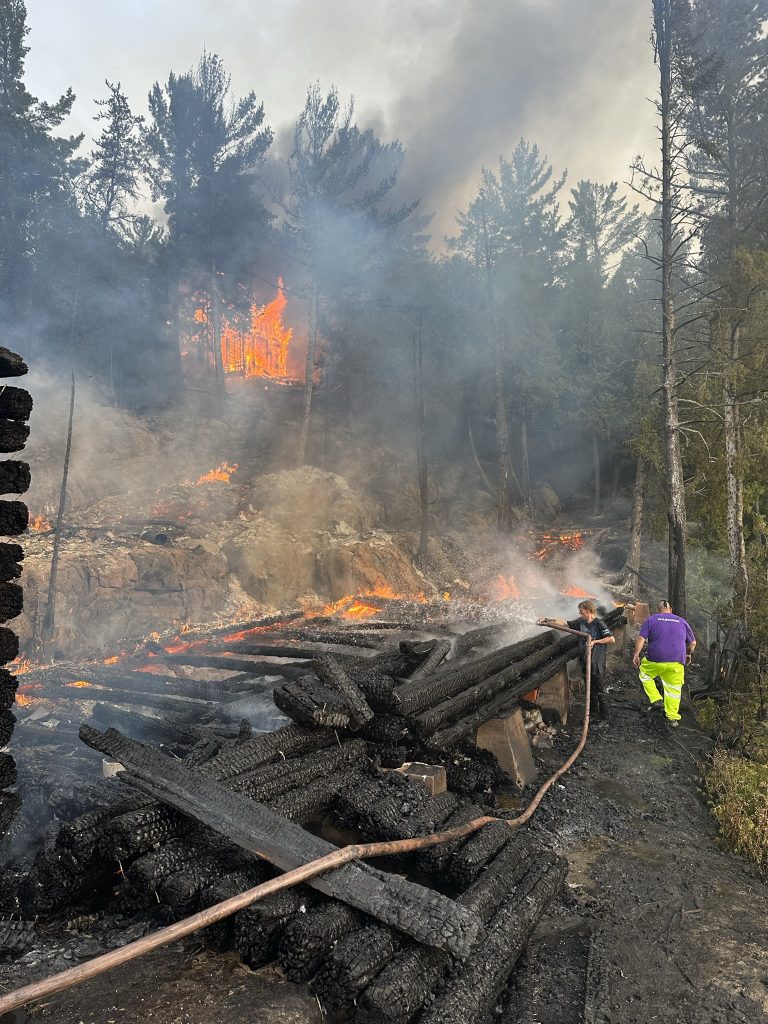 By about 9:00 p.m., only the lodge fireplace and wall were still standing. At that time, almost a dozen pumps were pouring water all over the burned area to continue taking the heat out of the embers and rocks. Professional firefighters had arrived at the scene and were planning to spend the night on island to make sure the fire stayed out.
By about 9:00 p.m., only the lodge fireplace and wall were still standing. At that time, almost a dozen pumps were pouring water all over the burned area to continue taking the heat out of the embers and rocks. Professional firefighters had arrived at the scene and were planning to spend the night on island to make sure the fire stayed out.
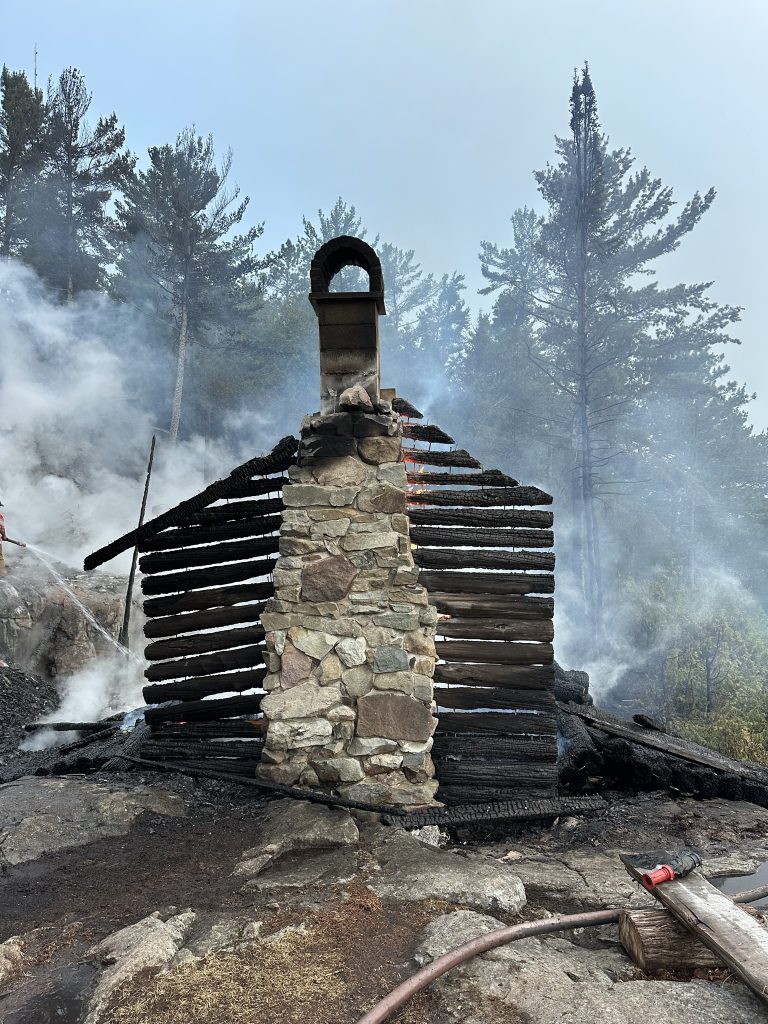 Many people from around the lake raced to the fire and brought personnel, fire pumps, energy, and determination – not knowing what they would find at the column of smoke – to contain the fire.
Many people from around the lake raced to the fire and brought personnel, fire pumps, energy, and determination – not knowing what they would find at the column of smoke – to contain the fire.
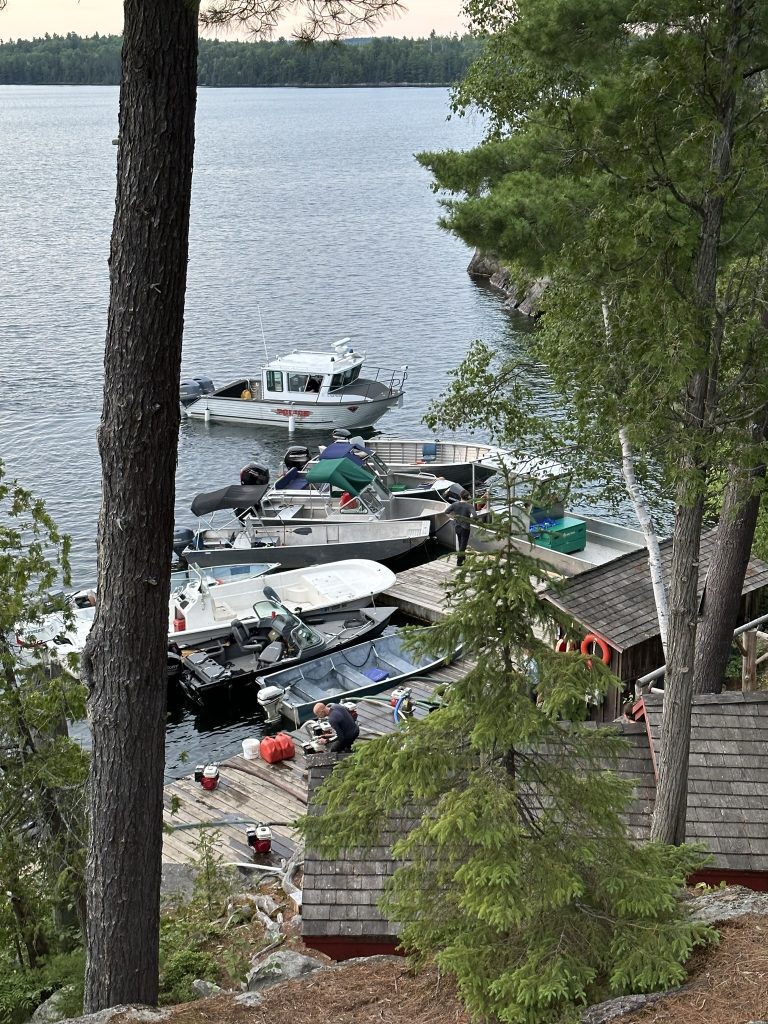 By 9:30 p.m., the fire was fully out. As darkness approached, many of us who had boated towards the fire began the process of getting off the island and home before dark.
By 9:30 p.m., the fire was fully out. As darkness approached, many of us who had boated towards the fire began the process of getting off the island and home before dark.
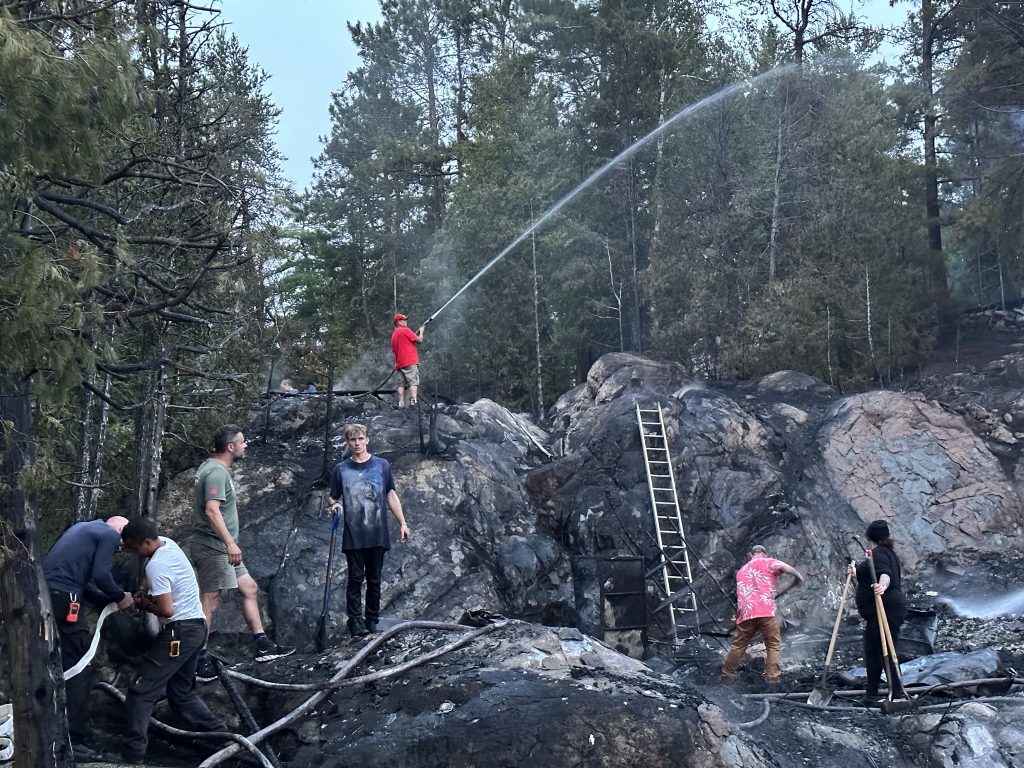 There are many observations and lessons to be drawn from this disaster. A few thoughts I’ll take away from the experience:
There are many observations and lessons to be drawn from this disaster. A few thoughts I’ll take away from the experience:
- Temagami folks from around the Lake showed up and jumped into action – a great group effort.
- Portable water pumps, some subsidized by the municipality, were crucial tools. More is almost always better when fighting a fire.
- Not all hoses and nozzles are interchangeable – know the equipment you’ve got and how to use it.
- Timing and weather are critical. If it had been windy or dark, the outcome would have been very different.
In the end, some historic property was lost, but no one was hurt, and the island flora was saved so that rebuilding can begin.
